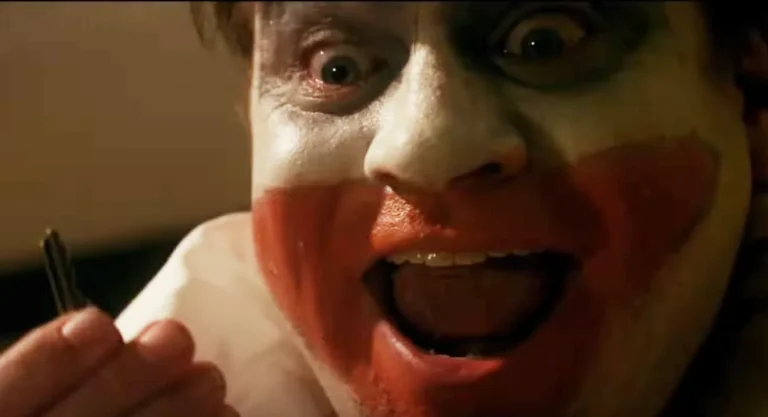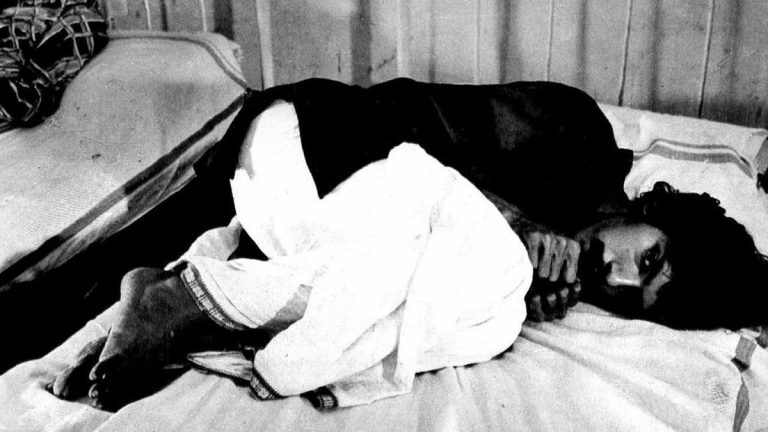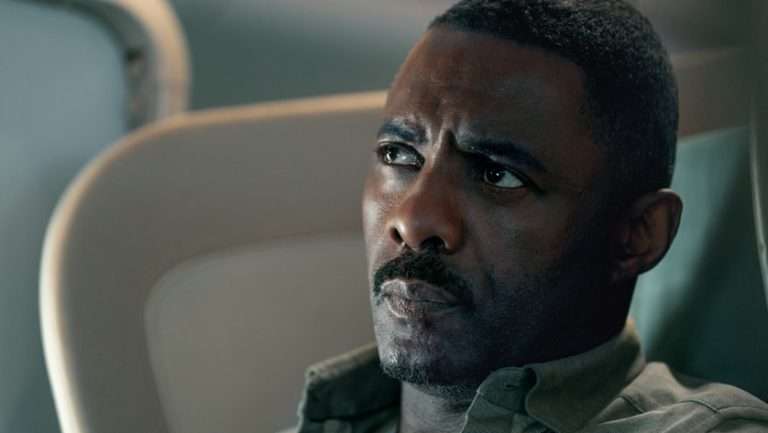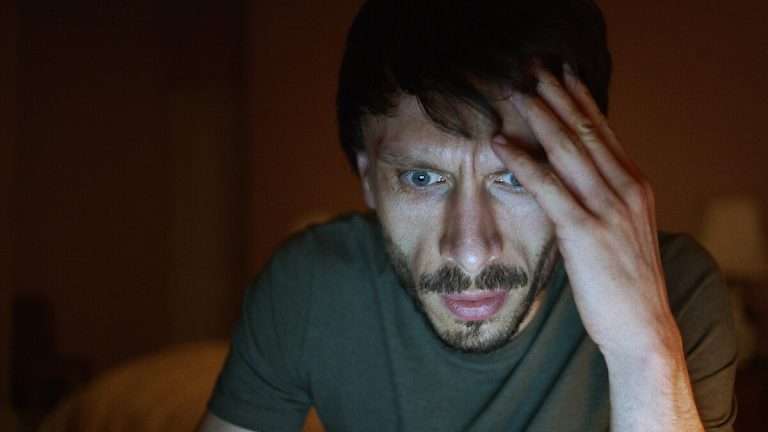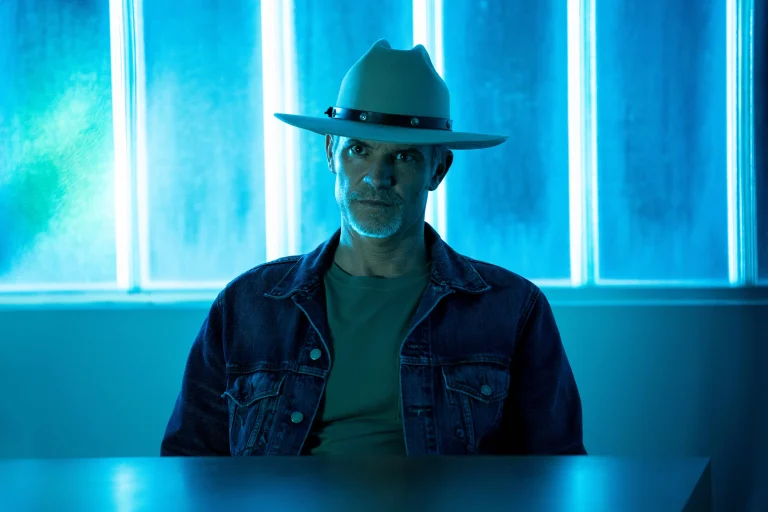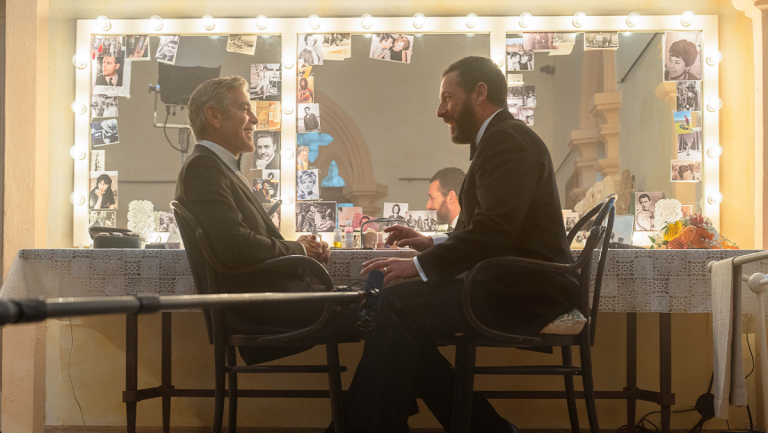Jeffrey Darling’s debut feature, “He Went That Way,” draws from a real-life story involving the serial killer Larry Lee Ranes and animal trainer Dave Pitts on a hitchhike through Death Valley in the 1960s. Darling died in a surfing accident before he could see to the end of the film, and the postproduction wasn’t henceforth supervised by him. The film premiered at the Tribeca Film Festival in 2023 and stars Zachary Quinto and Jacob Elordi. 2023 has been a spectacular year consolidating Elordi’s stardom and acting prowess with two major projects, “Saltburn” and “Priscilla.” “He Went That Way” is a film best left forgotten in the actor’s stellar year.
He Went That Way (2023) Plot Summary & Movie Synopsis:
The film opens in the 60s in the desert of Death Valley. There is a voiceover that implies things don’t go as planned. Eventfulness is definitely on the cards here. Jim (Zachary Quinto), an animal trainer with a chimp in the back of his car, is driving through the valley when he comes across Bobby (Jacob Elordi). He thinks of him as just some harmless high school dropout looking for a ride and offers to hop in the car. Bobby is initially skeptical and questions Jim if he is some kind of pervert, which is emphatically denied. Jim insists he doesn’t mind offering Bobby a ride to Chicago since he, too, is headed that way.
Bobby doesn’t take much discovery to reveal his past actions. His plan initially was to murder Jim. However, he hadn’t factored in the chimp, Spanky, to whom he takes a liking, although he is initially unsettled. The chimp disrupts the plans and takes the whole business to an unexpected route. Jim offers all his valuables to Bobby and spares him his life.
Why does Bobby feel used by Jim?
Jim takes a detour to meet his brother-in-law, Saul. He demands Saul pay back the loan he had given him a while back. Jim believes the repayment of the loan would ameliorate his situation, especially given the cancellation of the showbiz gig with Spanky. Jim tries to get Bobby into talking to Saul, emboldened by the fact he might be more effective and intimidating. Bobby is enraged and puts Jim into the backseat, locking him up with Spanky. He purportedly threatens Saul and drives off with Jim. He is deeply disappointed in Jim and tells him he felt let down because Jim used him from the beginning for the endeavor. Eventually, Bobby lets Jim out of the cage,
Gradually, a peculiar friendship blossoms between the two. Bobby confides how he had grown up in an abusive environment, completely deprived of positive, supportive words. He shares how his girlfriend, Bonnie, has left him, but he hopes to win her back. Jim offers Bobby his red sweater, though Bobby professes an aversion to sweaters, preferring jackets that he regards as appropriately masculine. Bobby has a lot of anxiety around queerness, and Jim gently helps him get over some of it.
Jim discovers Bobby wishes to get the attention of girls and decides to use Spanky as a means. Two girls are drawn especially to Jim, and they go to a motel. Bobby, however, is too coarse and rough. This leads to an argument that Jim eases into control. Jim urges Bobby to be gentler in his ways. He discovers Bobby has been looking for advice on how to patch up with his girlfriend.
He Went That Way (2023) Movie Ending Explained:
Does Jim make it out alive?
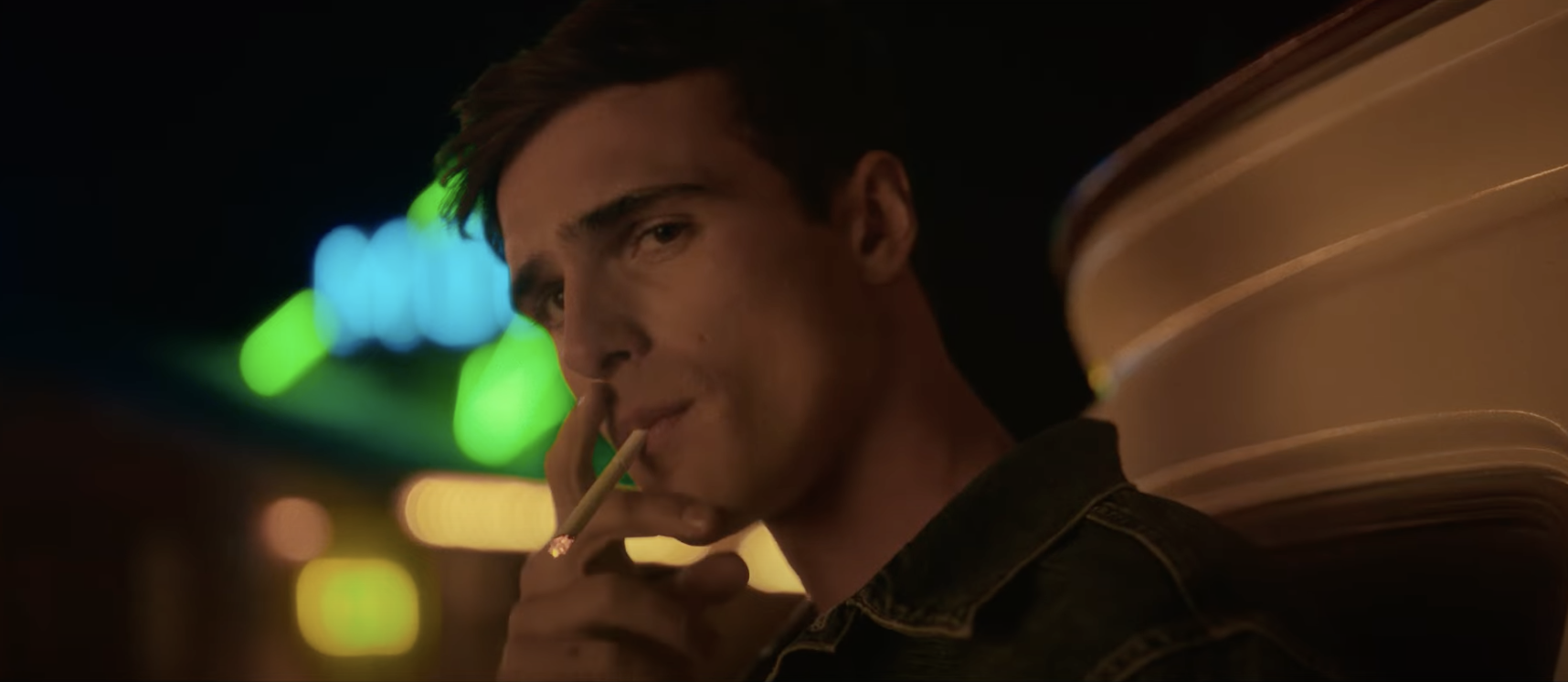
Jim had been trying all along to coach Bobby into being a better person, even taking away his pistol. On reaching the destination and not being able to find it, Bobby is enraged and demands he give it back. He shuffles out of the car. Soon, Jim pulls up before Bobby. Bobby has an emotional moment with Spanky, having grown fond of him. Jim offers Bobby a few mementos as a parting gift.
We learn Jim had traveled to Chicago to sell Spanky, but on arriving at the buyer’s house, he realizes Spanky’s true worth and the chimp turns aggressive with the buyer. The deal falls through, and Jim sets off with Spanky. There’s a sort of happy ending for Jim as he gets another contract with Spanky and a bad one for Bobby, who apparently boasted about his killings and got nabbed by the cops.
He Went That Way (2023) Movie Review:
Jeffrey Darling’s film is a bewildering tonal hotchpotch. It flits between several genres, practically confused and terribly unsure where it exactly wishes to place itself. If there had been a smarter screenplay, which isn’t the case here, the film could have derived a lot of wit and mischief from this tonal variety. Instead, the film is bogged down by a spectacularly silly, aimless, and utterly meandering script by Evan Wiener. Consistently, the narrative control strikes the viewer as lost from the get-go. There are disparate elements of a buddy film, crime thriller, and a road narrative clumsily stitched together, frequently giving the impression the director doesn’t know how to wheedle the tension, drama, or any palpable urgency out of them.
It is critical for a film with such a narrative that leans into precarity and a life being on the edge to provide a sense of fear and anxiety. Both are puzzlingly absent throughout, even when Bobby intermittently attempts to flash his menacing side. But the stakes remain dulled, and the viewer struggles to latch onto the film. Investment in the characters stays low, oftentimes wholly vanishing because both the leading characters suffer from insubstantial etching. The dynamism intrinsic to the tense situation never pops off the screen, and neither is Elordi able to conjure any real threat. While the actor taps a familiar loose-limbed quality, there’s little he brings otherwise; therefore, it becomes doubly hard to perceive the extent of the walking-on-eggshell circumstance Jim has found himself in.
Read More: Where to Watch & Stream the new thriller movie ‘He Went That Way’ starring Jacob Elordi?
While the risk gets accentuated in the situations, the narrative increasingly comes off as inconsequential and barely involving. To exacerbate matters, Darling intersperses flashbacks from Bobby’s kills that register as a thankless, careless add-on, only needlessly protracting the film. There are ample hints of Bobby’s mentally fragile state, but the film is simply not interested in unpicking those, opting instead for a set of emotionally distant scenes that offer no glimpse of the characters’ internal states. This choice hampers the film, limiting the viewer from finding a footing in the world Darling creates. The needle drops, the expansiveness of the desert vistas, the faces that appear along the sidelines as the car passes by — nothing quite accumulates to build an effective, persuasive portrait of heightened instability in the country at that specific point in time.




